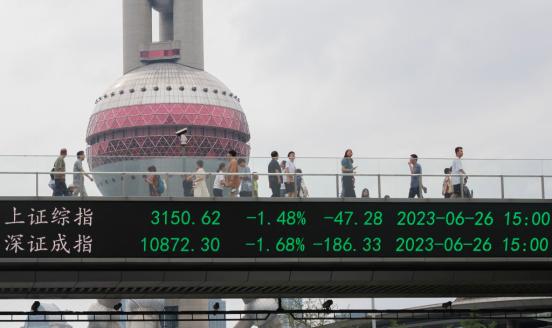China real estate developers: a grey rhino in the jungle of financial risks
The author assesses the Chinese real estate industry’s liquidity concerns and its leverage, which is estimated to be four times higher than its global
This article was also published on The Asian Banker

Apart from the much-discussed trade war, the difficult financial situation of real estate developers is probably the most obvious grey rhino of the Chinese economy. While the risks have certainly been latent for quite some time, investors seem to have overlooked them.
The recent deleveraging campaign has somewhat controlled leverage in state-owned enterprises but unfortunately not yet in China’s highly leveraged private sector, of which real estate developers are the lion share. The question, though, is whether Chinese developers can handle the pressure of tougher financial conditions as loans may not be directed into the sector even with laxer monetary conditions. In this report, we aim to access their repayment ability to draw conclusions on the real estate sector with a bottom-up approach.
We argue that, even if demand for real estate remains resilient, the revenue of developers will be compressed from a decelerating price cycle driven by tighter regulations. In particular, the risk of further restrictions on housing prices, mortgage loans and land supply, especially in first tier cities, will remain. Hence, developers are likely to be more cautious in land acquisition ahead of regulatory and liquidity risk, which could compress sales growth in the future.
Our concerns are on leverage and liquidity. The business model of real estate developers naturally comes with higher leverage than other sectors due to the capital intensity and long turnover cycle. However, the leverage of Chinese developers is almost four times higher than global peers, and this gap continues to widen.
Part of the reason is that Chinese developers have a much higher reliance on pre-sold housing and this is reflected as liabilities in the balance sheet. However, we believe developers have collected payments in advance and have to deliver the units eventually, which means the difference in industry norm is not an excuse in discounting when comparing to the global peers. The increase in sales turnover and advanced payment, fuelled the tremendous income growth in a short term, but there is a downside risk that the leverage could counter act in the future.
Developers are increasingly reliant on advanced payments since their ability to borrow has waned. Beyond bank lending and bond issuance, the ability to raise capital is also constrained by a much less appealing equity market. Among different types of funding, advanced payment and self-raised capital are the biggest and the only growing sources. And the latter, which includes bonds and equities, is the only source with accelerating growth rate.
As a consequence of onshore restrictions, developers have increased their offshore bond issuance since the beginning of 2018, even at a higher funding cost. However, the amount has cooled down lately due to the minesweeper game in risk of offshore investors. Another resort to ease liquidity pressure appears to be trust loans, which is one of the rare shadow banking items that is still available, but it now takes a much longer time for approval. Given the lack of financing means, developers have increased their offshore bond issuance since the beginning of 2018, even at a much higher funding cost, but the trend has ended in June.
We look at various parameters to access the repayment ability of Chinese developers, i.e. leverage ratio, liquidity risk, refinancing needs and forex exposure. Among the top 100 Chinese developers by asset size, we find that 13% are subject to considerable repayment risk. Given the currently more adverse growth environment, notwithstanding the PBoC’s efforts to provide liquidity, concerns on the repayment ability of Chinese developers should be considered one of the largest gray rhinos of the Chinese economy. Still, given their systemic importance for the Chinese economy, we believe that the risk of default should be more limited to – relatively small – individual firms.



